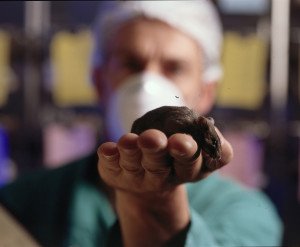 Prime Minister John Key has ruled out the use of animals in safety testing for new psychoactive substances.
Prime Minister John Key has ruled out the use of animals in safety testing for new psychoactive substances.
Speaking to Radio New Zealand and TVNZ Breakfast this morning, the Prime Minster stated that animal testing would not be part of a safety regime that requires manufactures of psychoactive substances to prove their products are low risk.
The announcement comes after growing public pressure on the issue of animal testing in relation to safety testing for ‘legal highs’ under the new Psychoactive Substances Act.
Related media coverage:
3 News: Govt to ban animal testing for highs
NZHerald: Drug trials on animals necessary, says expert
Stuff: Key draws line over testing highs on animals
ODT: Key rules out animal testing for legal highs
NewstalkZB: No animal testing for legal highs
NZHerald: Key rules out animal testing on legal highs
Last week the Science Media Centre contacted experts, posing the question: ‘Would it be possible to show a substance presents a low risk to human health without animal testing?’.
Dr Malcolm Tingle, Associate Professor in Toxicology, University of Auckland, speaking in a personal capacity, commented:
“So, do ‘alternative’ tests exist that have been validated? Yes; the OECD has ~80 guidelines for the testing of chemicals and there are in vitro (‘alternative’) tests for: genotoxicity; skin irritation; corrosion; sensitisation; absorption; estrogenic activity; photosensitivity. There are NO VALIDATED alternatives for systemic toxicity or teratogenesis.
“Would it be possible to show a substance presents a low risk to human health without animal testing? If we accept that a limited battery of the biological end points above is sufficient – for example, genotoxicity (but not cancer, for which there are no in vitro alternatives), irritation and photosensitivity – then YES, we may avoid animal testing.
“If, however, we accept that low risk of harm should cover systemic toxicity (e.g. toxicity after oral or inhalation exposure) and teratogenesis, then the answer is NO.
“Will that always be the case? Possibly, BUT if a new alternative test becomes available that is suitable, under the existing legislation, it must be used and any animal data for that endpoint becomes redundant.”
Professor Nick Holford, Department of Pharmacology & Clinical Pharmacology, University of Auckland, comments:
“It is certainly possible to show a substance presents low risk to humans without testing in non-human animals. This would however be on a case by case basis. If a new molecule from a well established and acceptably safe class was proposed for use in humans then it would be reasonable to go directly to humans for further testing of effectiveness and safety.”